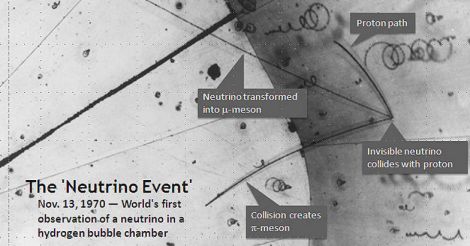A neutrino is an elementary particle that has low reactivity and studies on this particle brought Nobel laurels for Prof Takaki Kajita and Prof Arthur B McDonald for Physics this year. The achievement underlines the need for India to set up a neutrino observatory.
Neutrino observatories are places where neutrinos that reach earth are studied and their reactions noted. There are so many such observatories around the world. They are found under the sea, in mines or valleys because such a setup is required to seek and close in on neutrinos that do not react with most things and pass through even the densest of materials.
After photons, neutrinos are the particles that are most available in the universe. In fact their studies have helped to understand processes in the universe better. Normally, we are not able to view Supernovas from the start and had to be contended with whatever we could see a few days after the event occurred. However in 1987 a supernova explosion that happed in Large Magellanic Cloud, a nearby galaxy, could be viewed by us in full detail because neutrinos formed during the start of the explosion reached us, indicating that an explosion had occurred. Light particles came in only after seven days.
Similarly, we do not know what is happening in the Sun’s core due to fusion reactions. By the time the gamma rays come out from the sun they would have been converted into light and sound and would take many years to come out and therefore would not give us an idea of what is happening in the core. However, neutrinos would reach the earth in eight minutes and give us a fair picture of what is happening.
If India stays away from such an important scientific development, the loss can be of two types. One, we would lag in the scientific world and two, our scientists would migrate to nations that have such research facilities.
Those who oppose labs that can study neutrinos put forward excuses that are silly and often ridiculous. Neutrinos that are pushed from the Sun change while it reaches the earth and transform themselves as electron, muon or tau neutrinos. This year's Nobel prize was given for research on neutrino oscillations, which led to the postulate that neutrinos have mass, a significant deviation from established theories of the Standard Model of Particle Physics. While scientists have been throwing their weight behind a so-far hypothetical right-handed particle, sometimes called the sterile neutrino, let us hope that the facilities in India would throw more light into the existence of such a particle.
The author is a former state chairman of the Shasthra Sahithya Parishad





































































































































































































































































































































































































































































































































































































































Disclaimer
The comments posted here/below/in the given space are not on behalf of Manorama. The person posting the comment will be in sole ownership of its responsibility. According to the central government's IT rules, obscene or offensive statement made against a person, religion, community or nation is a punishable offense, and legal action would be taken against people who indulge in such activities.